Kaya Yoga Therapy 200-hour online ytt review: My honest experience & what you should know
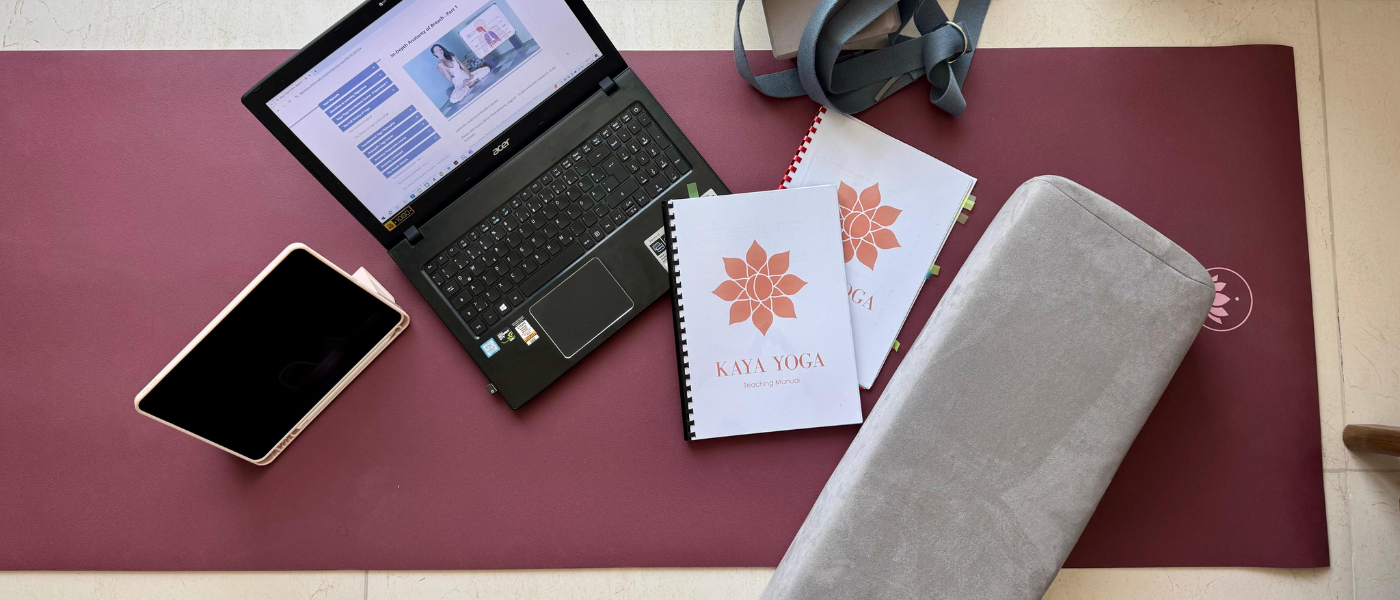
Hi fellow yogi, grab a cup of tea, because I’m about to give you an honest, in-depth look into my experience with Kaya Yoga Therapy’s 200-hour accredited yoga certification online (YTT). Whether you’re a yoga enthusiast, an aspiring instructor, or just someone curious about going deeper into the practice, this review will help you decide if this training is the right fit for your path.
As someone who transitioned from casual yoga classes to a full exploration of yogic philosophy, therapy, and teaching, I know how overwhelming choosing a YTT program can feel — especially when you’re trying to compare the best online yoga teacher training options without getting lost in the noise.
That’s why I’m sharing my full journey from what drew me to Kaya Yoga Therapy in the first place, to what surprised me, challenged me, and ultimately transformed me.
This isn’t just a “was it worth it?” post, it’s a deep dive into the structure, content, support, certification, and outcomes of the course, with insights that I wish I had before signing up.
Why I chose Kaya Yoga therapy’s online ytt
After three years of regular yoga practice, my curiosity started to stretch beyond asanas. What began as a way to stay active evolved into something much deeper, a connection to breath, mindfulness, and the spiritual foundations of yoga.
I wanted to go further, to learn how to guide others and, in the process, deepen my own practice.
Like many of us these days, I needed something flexible. I travel often and juggle multiple responsibilities. So an online program made the most sense, but I didn’t want to compromise on depth or quality.
Here’s what made Kaya Yoga therapy stand out:
- Therapeutic Focus: Kaya’s emphasis on yoga therapy, not just fitness yoga, resonated with my desire to explore healing through movement and breath.
- Accredited by Yoga Alliance: This was a non-negotiable for me. I wanted a certification that would be recognized globally.
- Self-Paced & Accessible: The program is entirely online and accessible across devices, which was a lifesaver with my schedule.
- Holistic Curriculum: The promise of combining philosophy, anatomy, mental health, and spiritual alignment drew me in.
Pro Tip: When comparing programs, don’t just look at cost — look at depth, support, and whether the program aligns with your reason for teaching. And honestly, the more you compare different top-rated yoga instructor programs, the more you start to see how unique Kaya’s therapeutic approach really is.
From the very beginning, it was clear this wasn’t going to be a surface-level course.
I wanted something that would challenge me mentally, emotionally, and spiritually, and Kaya Yoga Therapy felt like the right fit.
Course content and structure: A holistic, self-paced experience

When I first logged into the course portal, I’ll admit, I felt a bit overwhelmed.
With no rigid schedule and no live instructor guiding every step, it was entirely up to me to structure my learning. But surprisingly, the well-organized layout quickly helped me find my rhythm.
The course is designed to be completely self-paced, which means you can move through the material in your own time. But don’t mistake flexibility for lack of structure, this program is mapped out with impressive clarity.
What the curriculum covers:
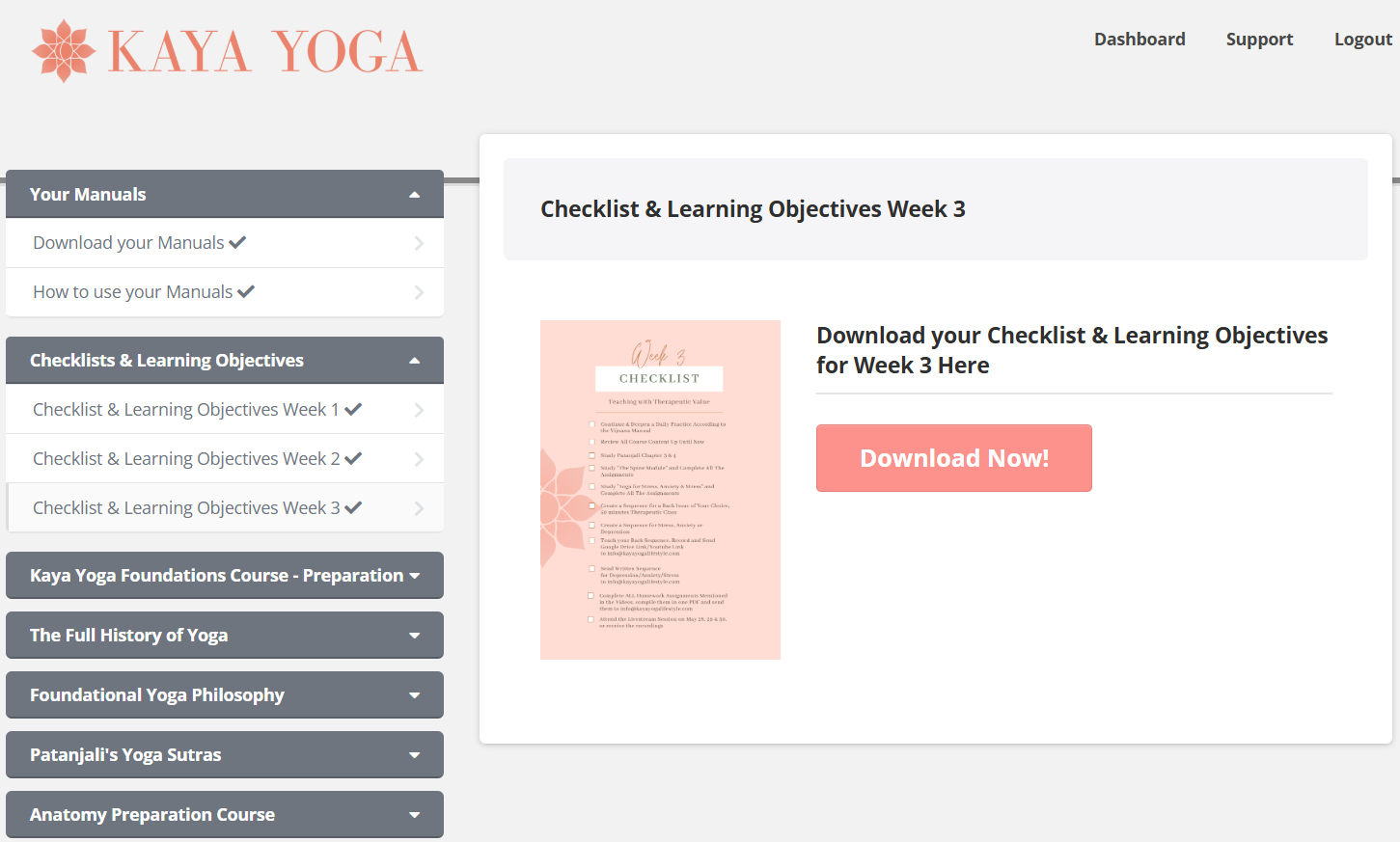
- Yoga Philosophy & History: In-depth exploration of yogic texts, traditions, and ethical principles.
- Anatomy & Physiology: A strong foundation in both basic and advanced anatomy, with emphasis on the spine and breath.
- Mental Health & Therapeutic Yoga: Specialized modules on yoga for depression, anxiety, and stress management.
- Teaching Methodology: Practical frameworks for cueing, sequencing, and adapting to different students’ needs.
- Daily Practices: Including asana, pranayama, and meditation practices to integrate the theory into your body and mind.
Each lesson includes:
- Pre-recorded videos and live stream replays.
- A self-reflection journal prompt or practical assignment.
- Specific textbook references (book and page number) for further study.
The course goes beyond passive video learning, you’re actively applying what you learn through tests, assignments, and teaching demos. There’s even a final exam and case studies required for certification, which gave me a strong sense of accountability and growth.
Asana library and teaching methods: Practical, detailed, and therapeutic
The asana component of Kaya Yoga Therapy’s 200-hour program was far more comprehensive than I expected.
Rather than rushing through poses, the course took a methodical, therapeutic approach to each movement, rooted in Hatha-Vinyasa but enhanced with adaptive techniques for real-world application.
What’s included in the Asana training:
- Seated poses, standing poses, inversions, balancing postures, backbends, twists, and restorative practices.
- Guidance is based on the Vijnana Yoga Manual, combined with live-streamed Vinyasa sequences.
- Step-by-step breakdowns of each pose, including anatomical cues, contraindications, and modifications.
Therapeutic adjustments
This isn’t a one-size-fits-all training. The course teaches you how to offer safe and supportive adjustments using props like:
- Folded blankets under the knees.
- Wall support for standing balance poses like Half Moon.
- Modified sequences for joint or nervous system sensitivity.
Each video ties directly to teaching applications. After learning a posture, you’ll complete an assignment that requires you to demonstrate, teach, or reflect on it, which solidifies the learning in a tangible way.
You’re not just memorizing poses. You’re learning how to adapt and teach them for different bodies, emotional states, and therapeutic needs, a valuable skill that’s often overlooked in more generic yoga trainings.
Certification and international recognition: More than just a credential
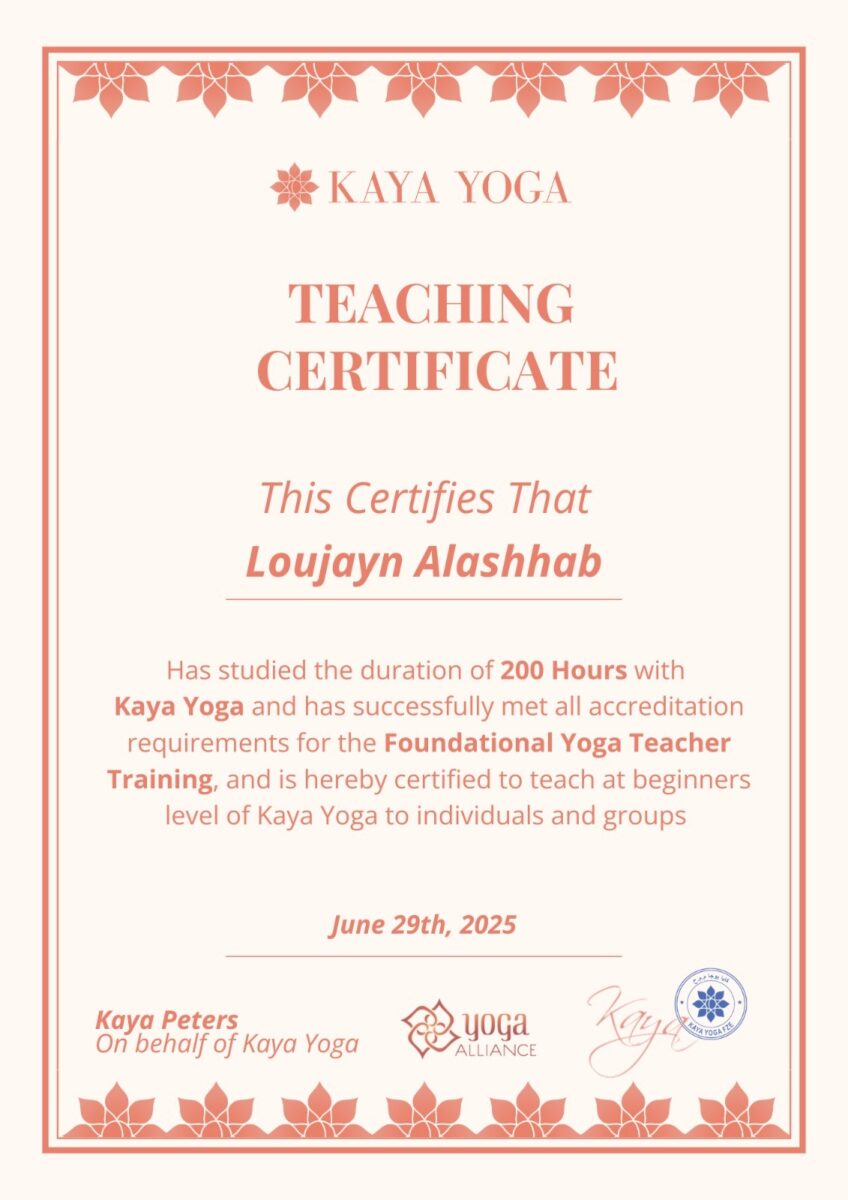
One of the key reasons I chose Kaya Yoga Therapy was its Yoga Alliance accreditation.
This 200-hour certification isn’t just symbolic, it’s recognized internationally, opening doors to teach worldwide, both in-person and online.
But what stood out to me most was that the certification is earned, not handed out. You’re required to complete:
- Written exams on theory and anatomy.
- Video submissions of your teaching.
- Case studies and peer feedback.
- Active participation in assignments and reflective journals.
This structure ensures you’re not just consuming content, you’re integrating and applying it. By the time I completed the course, I felt confident not just in my asana knowledge but in my ability to lead, adapt, and support a wide range of students.
Cost and value
The course is priced at $1,497 USD for a one-time payment, or available through a three-part payment plan. While that may seem like a significant investment at first, consider this:
- The total course value (including materials, live sessions, support, and manual access) is estimated at over $9,999 USD.
- The skills and certification you gain can directly support teaching opportunities, retreats, online offerings, or private clients.
This wasn’t just an educational expense for me, it was an investment in my career, confidence, and personal healing journey.
Support and communication: Consistent, personalized, and accessible
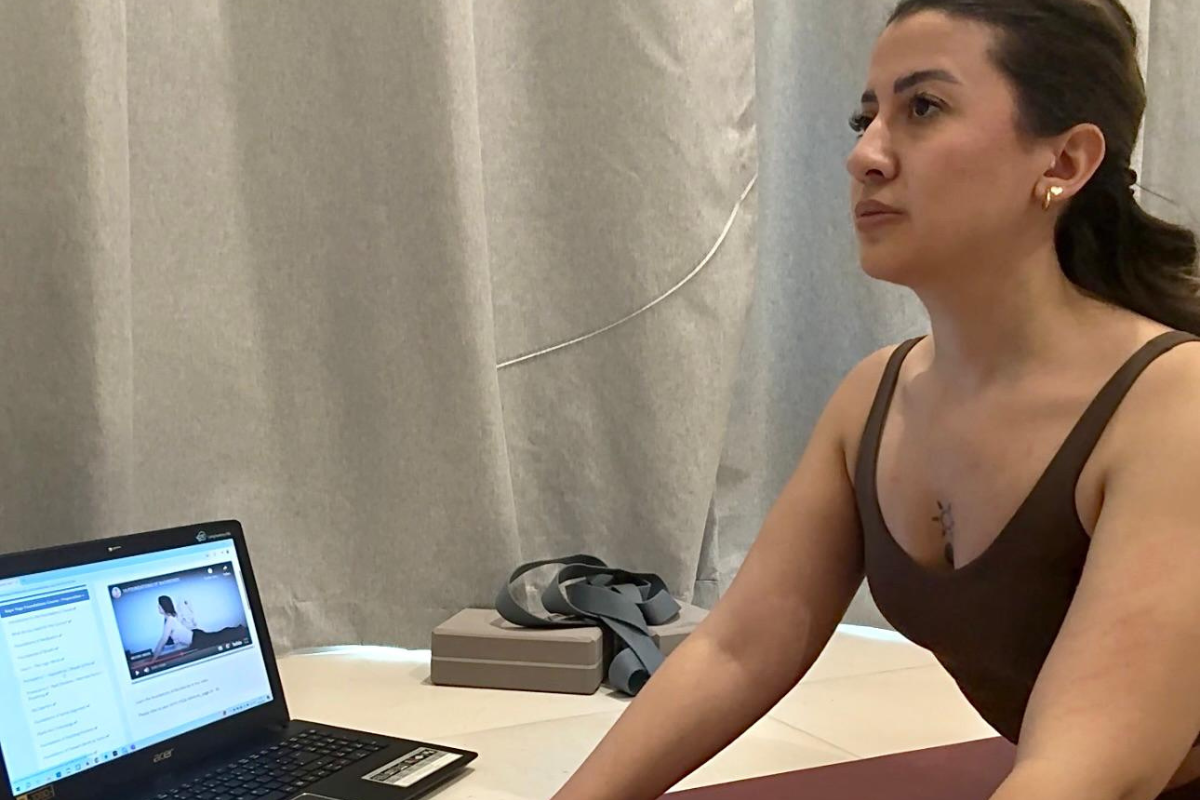
Despite being a self-paced course, the support system at Kaya Yoga Therapy is one of its greatest strengths.
From the beginning, I was never left feeling like I was learning in isolation.
Whether I had a question about an assignment, needed technical help, or just wanted feedback, I always received a timely, thoughtful response.
Multiple channels of support:
- WhatsApp Access: Direct, casual, and quick, ideal for real-time questions or accountability check-ins.
- Email Support: Professional, detailed feedback on written work and assignments.
- Video Feedback: Review of teaching submissions included constructive suggestions, not just praise.
- Community Engagement: A moderated WhatsApp group allowed for peer-to-peer learning, support, and even moments of humor (like meme therapy and pronunciation help).
What impressed me most was the individualized attention. Feedback wasn’t copy-pasted, it was specific, relevant to my progress, and often included helpful extras like:
- Instagram pages to follow for anatomy education.
- Book page suggestions for deeper reading.
- Encouragement during more difficult modules.
This level of communication not only enhanced the learning experience but also built trust in the teaching team and their commitment to student success.
Training materials and learning tools: Structured, high-quality, and easy to navigate
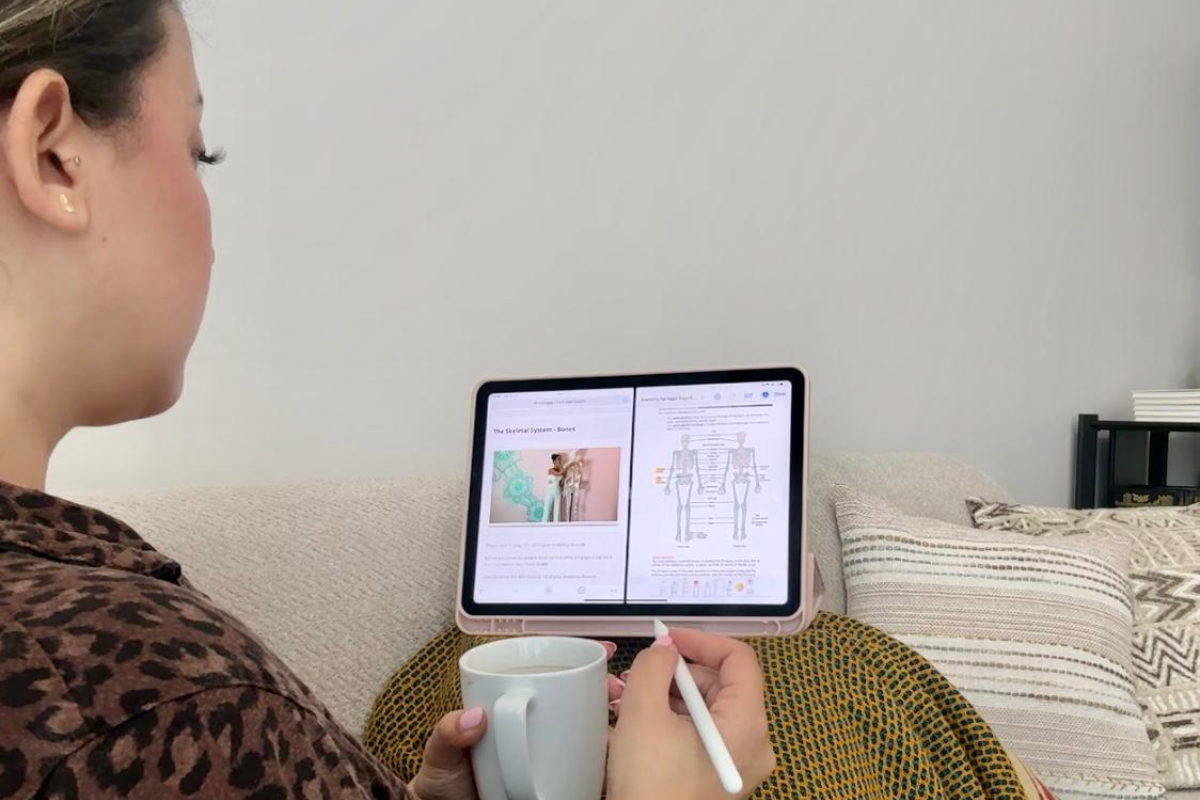
Kaya Yoga Therapy doesn’t just offer video lectures and leave you to figure things out. The program is built around a cohesive set of learning materials that guide you from preparation through certification in a clear, structured way.
Included materials:
- Custom Manuals:
- Teaching Manual, methodology, cueing, class planning
- Yoga Anatomy Manual, functional movement, joint safety, body mechanics
- Sutras Simplified Manual, accessible teachings of key yoga texts
- Video Orientation: A walk-through guide on how to use the manuals and portal for maximum benefit.
- Preparation Course: Before you even start the core curriculum, you complete a structured prep module that grounds you in the Kaya Yoga teaching style and philosophy.
Progress tools:
- A downloadable checklist and timeline to track each milestone.
- Access to a searchable course portal that makes reviewing material simple.
- Built-in quizzes, reflections, and uploadable assignments to ensure retention and real-world application.
This isn’t a generic dump of information. The resources are clearly created by experienced educators, with a focus on progressive learning and integration, not just information consumption.
What I appreciated most was how the tools helped me stay organized and motivated. I always knew what was coming next, what I had completed, and where to return if I needed review.
Tech platform and user experience: Seamless, flexible, and designed for modern lifestyles
One of the standout features of Kaya Yoga Therapy’s 200-hour online YTT is how smoothly the learning platform works across devices.
Whether I was on my laptop at home, using my iPad in a café, or listening to audio lessons on my phone while commuting, the course was always accessible and easy to navigate.
Key features of the platform:
- Device Compatibility: Full access via phone, tablet, or desktop, no app download required.
- Search Functionality: Quickly find specific topics or return to modules without digging.
- Progress Tracking: Each video or assignment is marked as completed once viewed or submitted, making it easy to pick up where you left off.
- Subtitles on All Videos: Perfect for visual learners or those studying in second languages.
The user interface is intuitive and visually calming. The minimalist design and color palette reflect the therapeutic tone of the training itself, subtle design choices that contribute to an overall feeling of calm, clarity, and focus.
Even small touches, like including links to teacher outfits or recommended yoga wear, made the experience feel thoughtful and human, not mechanical.
Most importantly, the technology never got in the way of the learning. It supported it, quietly, efficiently, and with just enough functionality to keep things flowing without distractions.
Community and interaction: Real connection in a virtual space
One concern I had before starting an online yoga teacher training was the potential lack of community. I expected to feel isolated or disconnected.
Instead, Kaya Yoga Therapy created a surprisingly rich sense of connection and interaction, even without live, real-time supervision.
How community is built:
- Private WhatsApp Group: A space to share assignment videos, ask for pronunciation help, swap resources, or simply encourage each other. The tone was always respectful, uplifting, and moderated daily by Kaya’s team to keep it focused.
- Live Stream Recordings: These aren’t just passive replays, they’re structured to make you feel like you’re part of a real-time class, with practical demonstrations, verbal cueing, and sequencing.
- Peer Visibility: Seeing others’ submitted teaching demos added a sense of shared progress and inspired accountability.
- Mentorship Through Feedback: While feedback came from the training team, the WhatsApp space allowed us to learn from one another’s experiences and questions in real time.
Kaya Yoga Therapy also goes a step further by facilitating post-course opportunities to stay connected, collaborate, and even grow your yoga business.
Events, wellness meetups, and networking sessions help graduates find new ways to apply their certification beyond the mat.
This is not a course where you finish and disappear. It’s a program that fosters continued learning and real connection, even in a remote setting.
Course timeline and time commitment: Flexible, but structured for real progress
The Kaya Yoga Therapy program totals 200 hours of study and practice, in alignment with Yoga Alliance requirements. But how and when you complete those hours is entirely up to you, and that flexibility is one of the course’s greatest strengths.
Recommended timeline:
- Suggested completion: 3 months
- Actual flexibility: Extend or accelerate based on your schedule, goals, or energy levels
The program is designed to accommodate different learning styles and life commitments. Whether you’re a full-time worker, a parent, or a frequent traveler, the course molds to your availability, without sacrificing depth.
What those 200 hours include:
- Asana, pranayama, and meditation practices.
- Anatomy, philosophy, history, and teaching methodology.
- Focused modules on mental health (depression, anxiety, and stress).
- Self-study, reflection, exams, and case studies.
Rather than feeling like a checklist to “get through,” the content builds progressively. Each module prepares you for the next, so you’re not just logging hours, you’re evolving as a practitioner and future teacher.
You’ll also find that the structure supports discipline without pressure. The timeline checklist and visual progress markers help you stay on track, while still allowing room for rest, integration, or life interruptions.
Impact on my teaching and personal growth: Beyond poses, toward purpose
When I first enrolled, I assumed this training would primarily teach me how to guide a yoga class, how to cue asanas, offer modifications, and lead a group through a structured flow.
And while it did all of that, what I didn’t expect was how deeply it would reshape my understanding of yoga as a therapeutic, transformational tool, for myself and others.
How it changed my teaching:
- I moved from generic cueing (“inhale, arms up”) to building intentional sequences aligned with breath, nervous system states, or emotional themes.
- I learned to adapt classes for real people, not idealized bodies, using props, sequencing strategies, and trauma-informed language.
- I became more confident leading both live and online sessions, with a toolkit of variations for different energy levels, injuries, or emotional states.
How it changed me personally:
- The reflection journals, mindfulness practices, and anatomy insights helped me understand my own body and behavior patterns with more compassion.
- I now approach yoga not just as movement, but as a framework for living with awareness, regulation, and connection.
- It gave me the confidence to start offering classes professionally, both online and while traveling, something I never thought I’d do.
This wasn’t just a technical training. It was a catalyst for self-discovery, growth, and professional empowerment.
Post-certification opportunities and continued learning: Growth beyond graduation
Completing the 200-hour certification through Kaya Yoga Therapy wasn’t the end of the journey, in many ways, it was just the beginning. One of the most valuable aspects of this program is the ongoing support and educational pathways available after certification.
What happens after you graduate:
- Wellness & Business Events: Kaya hosts occasional virtual events where graduates can learn about the business side of yoga, connect with fellow teachers, and explore wellness entrepreneurship.
- 300-Hour Advanced YTT: For those wanting to deepen their knowledge, there’s a seamless upgrade path to the 300-hour training using the same platform and teaching methodology.
- Prenatal Yoga Certification: Specialized courses are available for those wanting to support pregnant students or work in women’s health.
- Alumni Networking: The WhatsApp group and community spaces remain active after the course, offering a place to share teaching opportunities, ideas, and mentorship.
This isn’t a course that disappears once the certificate is in your hands. Kaya Yoga Therapy positions itself as an ongoing learning hub, ideal for yoga professionals who want to evolve, specialize, and grow sustainably over time.
Platform design and learning experience: Thoughtful, calming, and intuitively built
The user experience of the Kaya Yoga Therapy platform reflects the same care and intention that runs through the course content.
While it’s easy to underestimate the impact of good design, this was one of the subtle elements that made my learning smoother and more enjoyable.
What stands out about the platform design:
- Visually Grounded Aesthetic: Soft color palettes and minimalist design reduce cognitive load and create a sense of calm, important when engaging with spiritual and emotional content.
- User-Friendly Layout: Everything is easy to find, from modules to downloadable resources. Even without being tech-savvy, I was able to navigate the portal with no frustration.
- Clear Progress Indicators: Videos and assignments are automatically marked as complete, making it easy to track your journey and stay motivated.
- Accessibility Features: Subtitles on all videos, cross-device compatibility, and flexible navigation make the course inclusive and adaptable.
The design choices aren’t just about aesthetics, they contribute to better learning retention, lower frustration, and a more meditative relationship with the course content.
For a training centered on wellness and mindfulness, this level of UX alignment truly matters.
Pros
- Therapeutic, adaptation-first approach (props, contraindications, trauma-sensitive cueing).
- Structured yet self-paced with clear checklists, quizzes, assignments, and finals.
- Rigorous assessment (written exams, teaching videos, case studies) → certificate is earned.
- Comprehensive curriculum (philosophy, anatomy/physiology, mental-health modules, teaching methodology, daily practices).
- Strong support (timely WhatsApp/email feedback, active peer community).
- Solid platform & materials (cross-device access, subtitles, manuals, search, progress tracking).
Cons
- High self-discipline required; limited real-time supervision.
- Hands-on adjustments are constrained online; tactile skills develop slower than in person.
- “Therapy” focus ≠ clinical licensure; scope of practice remains YTT-200.
- Fewer live contact hours than some students prefer.
- Not the cheapest option; mentorship beyond 200 hours may still be needed.
Bonus features and extras: Thoughtful add-ons that deepen the experience
Beyond the core curriculum, Kaya Yoga Therapy includes a range of bonus resources and learning tools that go above and beyond what many online yoga teacher trainings offer.
These additions aren’t filler, they’re genuinely useful extensions of the main content, designed to reinforce learning and support long-term growth.
Included extras:
- Yoga Foundations Prep Course: A self-paced mini-course designed to help you either revisit or learn yoga basics before diving into more advanced material. Great for both beginners and returning practitioners.
- Simplified Sutras Manual: Makes complex yogic philosophy accessible through clear summaries and real-life applications.
- Teaching and Anatomy Quick-Reference Guides: Designed for daily use when planning sequences or reviewing alignment and anatomy.
- Sample Exams and Case Studies: These helped me understand the exam expectations and provided templates for real-world applications of what I was learning.
- Sanskrit Pronunciation Tips & Reading Lists: Optional, but extremely helpful for refining your teaching voice and deepening your academic understanding of yoga.
These resources reflect an educational mindset: not just teaching yoga, but teaching you how to continue teaching yourself. They helped me feel more prepared, more confident, and more grounded in my role as both student and future teacher.
Conclusion: A training that transformed more than my teaching
I entered Kaya Yoga Therapy’s 200-hour online training expecting to learn how to teach yoga. I left with so much more, a deeper understanding of myself, a refined teaching voice, and tools to support others with compassion, clarity, and confidence.
This training helped me transition from student to guide. It didn’t just certify me, it empowered me.
Whether you want to build a career in yoga, supplement another wellness profession, or simply commit to a life-changing personal journey, this program offers both the depth and flexibility to meet you where you are.
If you’re looking for a yoga teacher training that blends ancient wisdom with modern therapeutic application, all while fitting into your schedule and lifestyle, this is an option worth seriously considering. And if you want to explore how it measures up alongside other respected schools, you can always check our full guide to the top online yoga teacher training programs to support your decision.
You won’t just get a certificate. You’ll gain a toolkit to support others, a deeper connection to your own body and breath, and a clearer sense of purpose, on and off the mat.
FAQs
Yes. Kaya Yoga Therapy is a Registered Yoga School with Yoga Alliance, and the 200-hour certification is globally accepted.
Very flexible. The course is 100% self-paced and can be accessed from any device. You can move through the material according to your schedule.
The course is available in both English and Arabic.
Yes. You’ll graduate with an internationally recognized certification and a well-rounded skill set that includes business development, therapeutic application, and class design.
Yes, you retain access for one year post-completion, allowing you to revisit lessons and deepen your learning.
Absolutely. Kaya Yoga Therapy offers a 300-hour advanced training, prenatal yoga courses, and regular events for graduates focused on yoga business, therapy, and wellness.
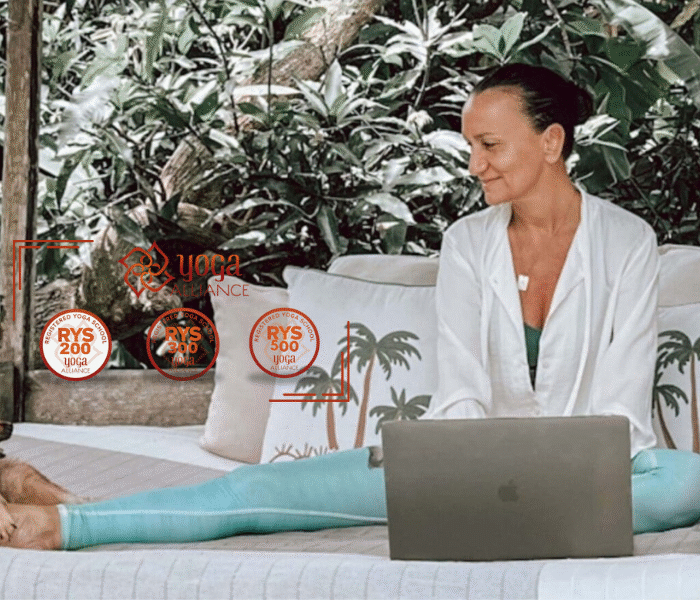
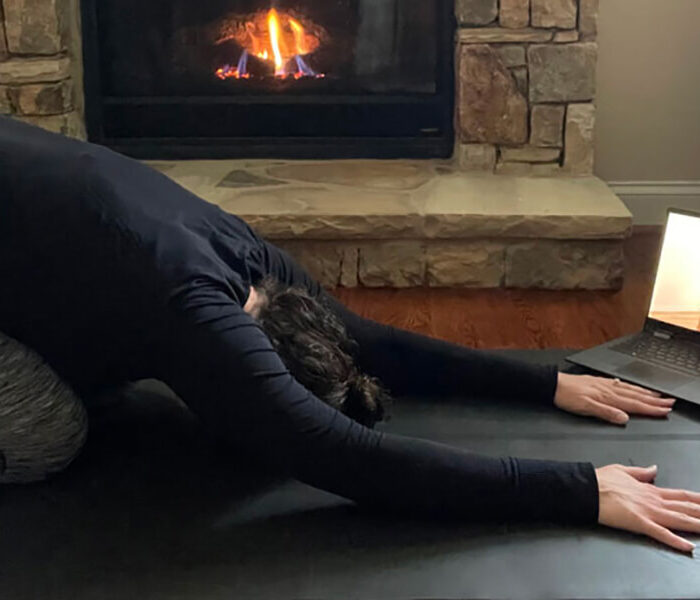
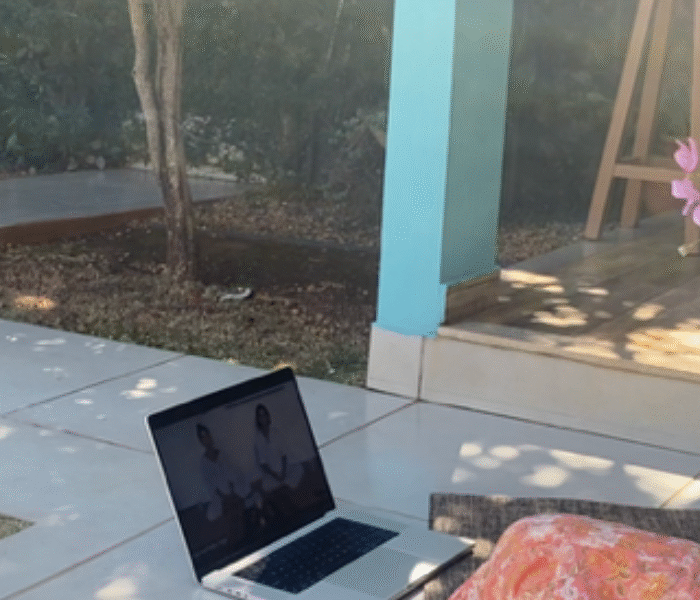
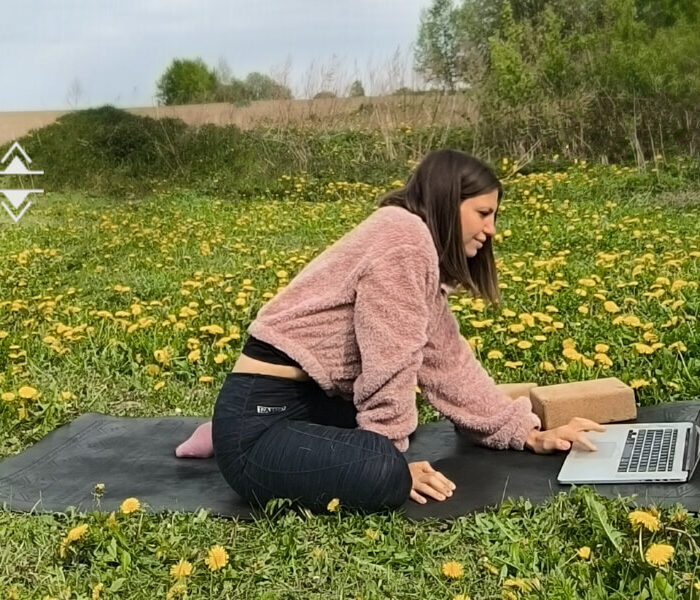
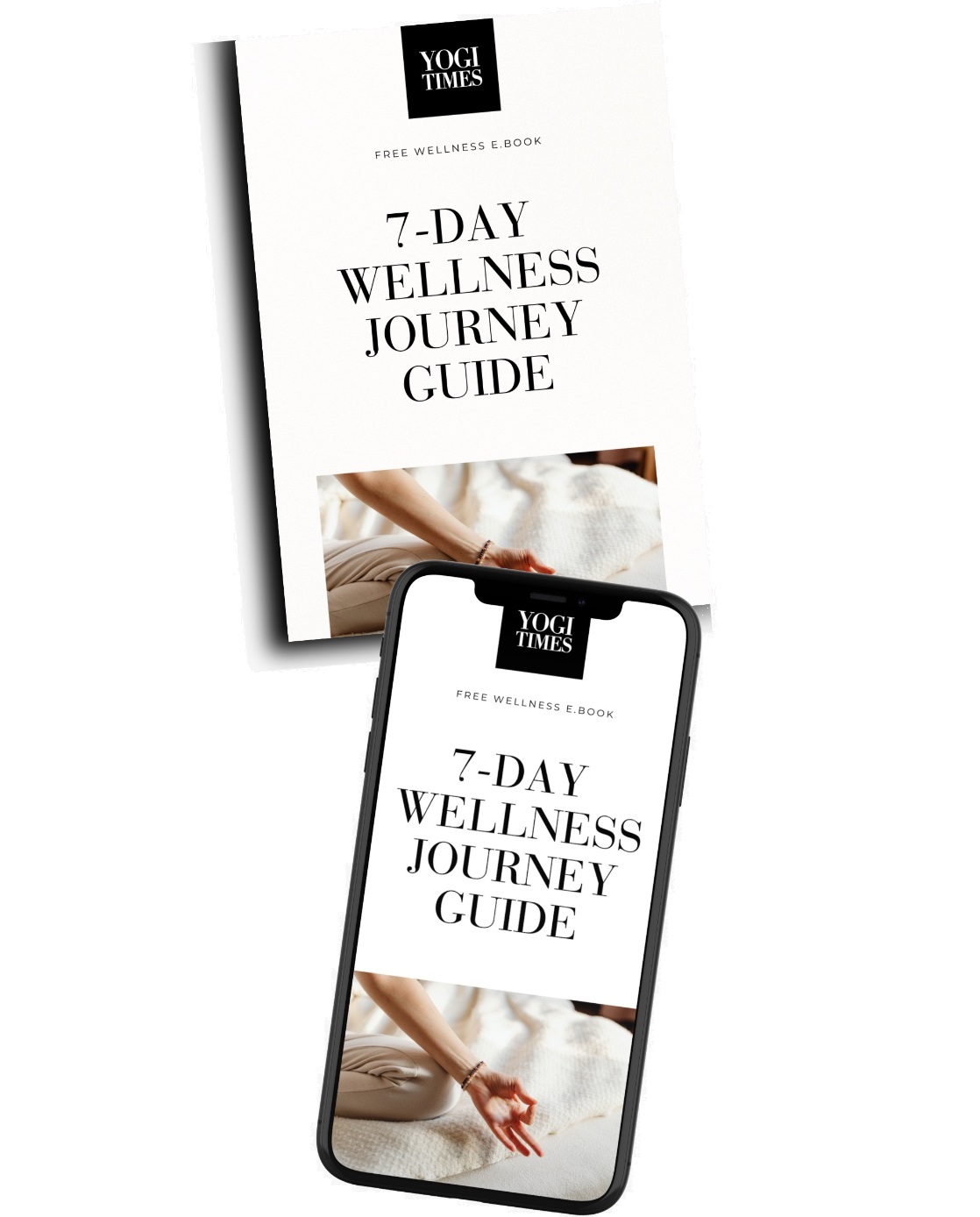
The design of the platform with calm colors and easy layout seems like such a small thing but actually I think it would help. I get overwhelmed with messy platforms and I know it would affect my motivation, so this feels really thoughtful.
I liked that you mentioned the feedback wasn’t just copy-pasted but actually personalized. I’ve done online courses where you can tell the “feedback” was like a template. Having real humans care about your progress makes such a difference.
Reading this kinda made me realize that a YTT isn’t just about becoming a yoga teacher, it can be about growing as a person too. The way you shared how it changed your self-awareness and confidence hit me, cause that’s honestly what I’m looking for.
The section on mental health and therapeutic yoga really stood out. I feel like yoga has helped me with anxiety personally, but I never learned the actual science or safe way to use it. That feels like such a valuable skill to have as a teacher.
Nice blog here Also your site loads up very fast What host are you using Can I get your affiliate link to your host I wish my site loaded up as quickly as yours lol
Your description of how it changed your cueing style made me think. I’ve been to so many classes where teachers just say “inhale arms up, exhale fold” with no connection to anything deeper. It’s cool that they teach you to bring intention into every class.
The bit about exams and case studies honestly scared me a little but then it made me realize it’s actually better cause it proves you know your stuff. I’d feel way more confident teaching if I knew I passed those tests and not just paid for a piece of paper.
I’m a full time worker and mom so the flexible pace part really spoke to me. I’ve looked at other programs with rigid schedules and I just knew I couldn’t keep up. This one sounds like it adapts to you instead of forcing you to adapt to it.
The reflection journal prompts sound amazing. I don’t just want to memorize stuff, I wanna actually process what yoga means for me and how I can share it. That part of the program feels like it would make the difference between just being “certified” vs actually being a good teacher.
I never even thought about the tech side of things until you mentioned it. Having subtitles, progress tracking, being able to access it from phone or laptop, that’s actually such a big deal. If the tech is annoying, I know I’d give up quick, so this part really matters.
I think it’s awesome they teach yoga therapy not just like fitness yoga, cause so many trainings are just about flow choreography. It feels more holistic, like actually yoga and not just another workout program.
The way you described the asana library really caught my attention. I don’t just wanna learn poses, I wanna understand how to help people with different bodies, injuries, or even moods. The part about modifications and props is so important cause not everyone can just jump into a deep pose.
I love how you admitted you were overwhelmed logging into the platform first time, I feel like a lot of us would be too. But the fact you quickly found a rhythm and that it’s organized enough to not feel like chaos, that’s kinda reassuring.
The price tag at first did scare me when I saw it but after reading your explanation of all the manuals, support, exams, and actual recognition from Yoga Alliance, it feels way more worth it. Like you said, it’s not just buying a certificate, it’s literally investing in a career.
Honestly I was always super skeptical about online teacher trainings cause I thought you’d just get videos and that’s it, no real feedback. But reading about the WhatsApp group, the video comments, and even the way they check assignments makes me rethink the whole online thing. It actually sounds more personal than some in-person classes I been to lol.
I really liked how you broke this all down in such detail, like not just saying “it was great” but actually explaining what the course covers, the support you got, even the tech platform. I’ve been researching YTT’s for months and honestly this is the first review that actually made me feel like I know what I’m signing up for.
You convinced me to look deeper into Kaya Yoga, I wasn’t even considering them before reading this.
So cool that they keep a community even after certification, I’d love that kind of ongoing support.
Honestly I’d be nervous to do teaching demos on video, but sounds like the feedback was supportive.
This made me think about how yoga isn’t just exercise but a whole lifestyle and healing thing.
Your note about adapting yoga for “real people not ideal bodies” really stuck with me.
Didn’t realize you had to do case studies and exams, that def makes it more legit.
The platform design with subtitles + tracking sounds sooo much easier than other courses I tried.
This review makes me actually feel excited about online YTT, I was skeptical before.
Love that they include mental health modules, that feels so needed these days.
The part about cueing with more intention hit me, I feel like many teachers just rush through.
I’m curious, how long did it take you personally to finish the 200hrs?
Really appreciate you talking about the personal growth side, not just teaching skills.
$1497 feels like alot at first but the way you explain it, it makes sense as a long term investement.
The certification process seems pretty tough but in a good way, like you actually gotta earn it.
I like how you kept it real about being overwhelmed in the beginning, I’d prob feel the same.
The WhatsApp group support part sounds so good, I always worried online would feel too lonely.
Didn’t even know online YTT’s could have this much structure, thats kinda impressive.
Love how you point out the therapy side, most trainings I see are just asana and fitness focused.
I been looking at different YTT’s and honestly this helped me alot in figuring out what I want.
Wow this is such a detailed review, thanks for sharing your whole journey, not just the “was it worth it” part.
The therapeutic focus is what catch my attention most. I am not interested in only fitness yoga, I want to understand how to help people with anxiety and back pain and all this real life stuff. The way you explain the modules on mental health and case studies makes the training sound very deep and useful for working with actual humans and not only flexible bodies.
I really appreciate how you share that you felt overwhelmed at the start with the self paced format. I am exactly this kind of person who needs guidance but also freedom, so it is nice to hear that the platform and weekly objectives helped you find rhythm. It gives me hope that I could handle it too and not just get lost in all the videos.
Reading your review honestly calm me down so much. I have been overthinking which 200 hour online YTT to choose and my brain was tired. The way you describe the structure of Kaya Yoga Therapy, with the clear portal and checklists and real exams, make it feel serious but still friendly. It sound like a training that actually wants students to succeed and not just sell another course.
Your connection with nature is so beautiful. When you talk about the lake in Canada and the mountains it remind me to go outside more and just breathe. It feels like you show us that yoga begin long before we step on a mat.